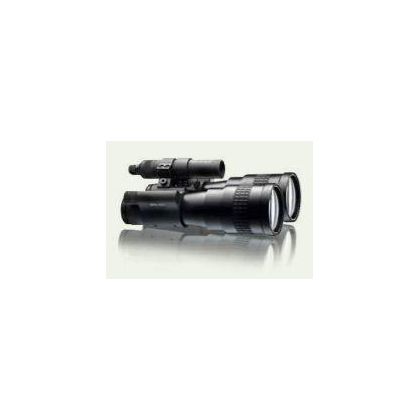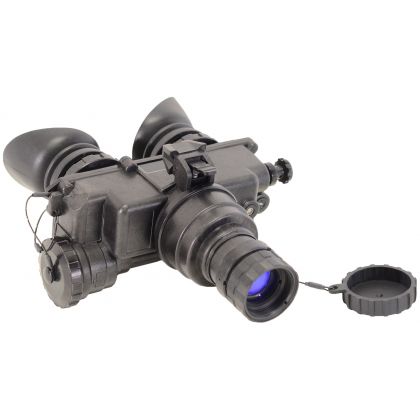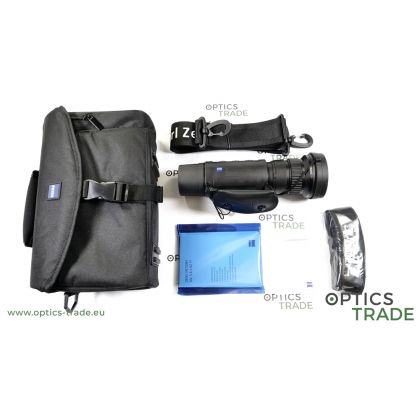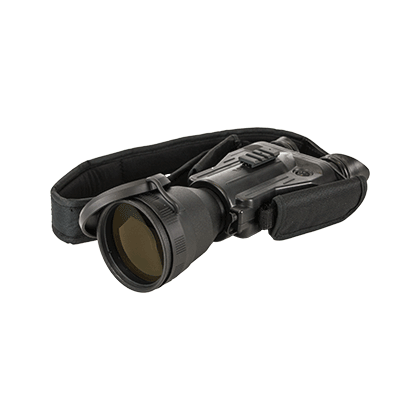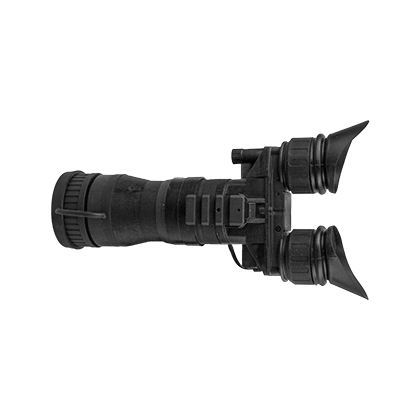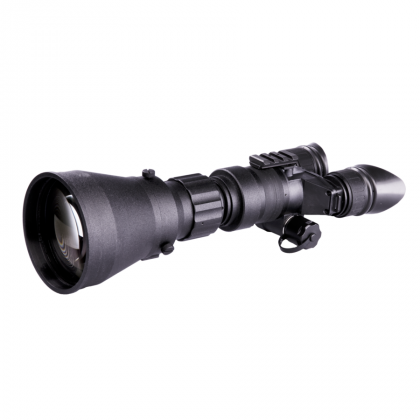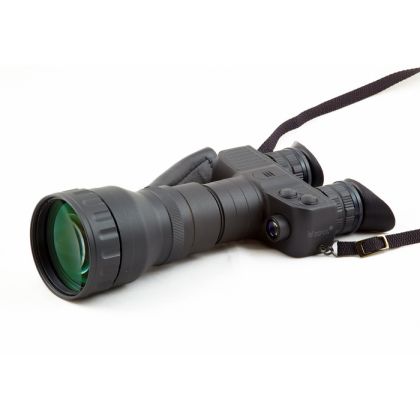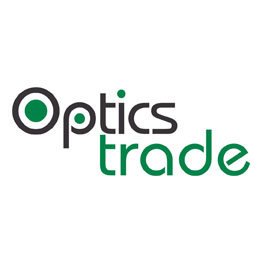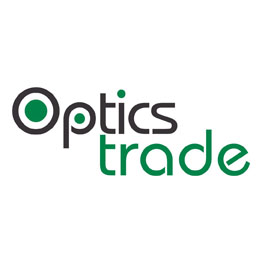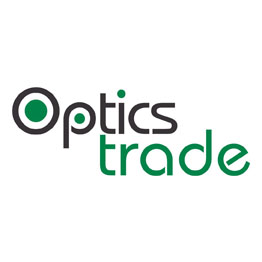Mounts
Night Vision Binoculars
Night vision binoculars are very popular among hunters. They offer an intensified picture for observation at night but can be used also in dusk or dawn. They are available in different magnifications, which tells us also for what purpose they are meant to be used. In the past, the most commonly used night vision binoculars were analog night vision goggles converted into binoculars. These are pretty long and have one big objective lens.
-
Analog night vision means that the image gets amplified by a photocathode and the image intensifier tube, and not with a sensor.
-
Analog devices also don't have a refresh rate like digital ones.
-
Night vision binoculars are available as analog devices or digital devices. Each of them has some advantages, but also disadvantages.
In the past, only a limited number of manufacturers produce night vision binoculars. Today, the number is much bigger, and many manufacturers offer also digital night vision devices. They are normally a lot cheaper and have also some other benefits as well.
Yukon Night Vision Binocular Tracker
Night Vision Goggles VS Night Vision - Binoculars
The difference between night vision goggles and night vision binoculars is often not easy to separate. These devices have often the same housing but still, one is called binoculars and one goggles. The only difference is the magnification – night vision goggles have true 1x magnification, which is very important, and night vision binoculars offer a magnified picture.
Why is it very important that Night Vision goggles have true 1x magnification?
-
Primally they were designed for helicopter pilots and soldiers on foot. Because of that, the image has to be normal, with no magnification, so the user had a picture like during the day. With a magnified picture the users would not have the true sense of distance, so it would be impossible to fly a helicopter, drive a car, or walk.
-
Night vision goggles enable the user to move freely and offer a wide field of view during the night. With night vision goggles that are mounted on the head of the user, the user can also aim with a weapon – many red dot sights on the market even feature a night vision-friendly illumination.
-
Some Night-vision goggles feature also an interchangeable objective lens, which gives us different magnifications. Thanks to that, the goggles can be also used as binoculars to observe objects on bigger distances.
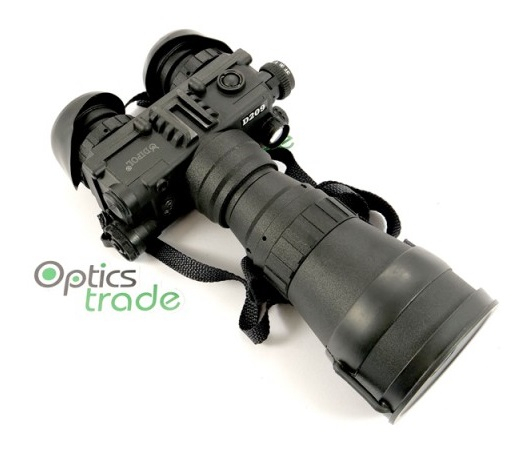

Night Vision Binoculars and Night Vision Goggles
Night vision binoculars, on the other hand, offer a magnified picture, so the detection range and recognition range can be drastically improved. The details the user can see during the night are much bigger, even on extended ranges. Night vision binoculars are available in many different magnifications, but the biggest downside of binoculars is, that the user cannot walk freely when observing. Also the field of view is much smaller, but this mostly depends on the given magnification – the bigger the magnification, the smaller the field of view.
Analog vs Digital Night Vision - Binoculars
Night vision devices are available in many different shapes and sizes. Years ago, only analog binoculars were available on the market. These were, and still are, available with different image intensifier tubes, which, in the end, tell us the price.
-
The cheaper devices feature a Gen. 1 image intensifier tube, but these are very limited in the distance of observing and also the performance in darker areas. The use of an additional IR light is in most cases needed.
-
The better night vision binoculars feature a Gen. 2 or even a Gen. 3 image intensifier tube. With these, the detection range extends, but also the price is a lot higher.
With an analog night vision device, you see the image directly through the device without a screen. This means the device has no refresh rate, so the image is displayed in normal time without any delay. With a digital night vision device, the image gets into the device with a sensor that is right behind the objective lens. This sensor processes and converts the image you are looking at to an electric signal, which, in the end, is showed on the screen in the ocular. Because the image gets converted, all-digital night vision devices have a refresh rate.
The refresh rate tells us how many pictures we see in one second. Good digital night vision devices have a refresh rate of 50 or even 60 frames per second, so the user sees a nice and smooth picture. When the refresh rate is too low, then fast-changing frames can be seen, which affect the viewing experience. Also the display the user is looking at has an important role. If the display's resolution is good, the displayed image is better, and you can not see every single pixel.

ATN Binox 4K Night Vision Binoculars
Advantages of Digital Night Vision Devices:
-
Digital night vision devices have one big advantage against analog devices – you can take photos and even videos. With an analog night vision device, this is not possible.
-
With digital night vision, it is also possible to use digital magnification, so you are not forced to use only one magnification.
-
Digital night vision devices can also be used during the day since the bright light can not damage the sensor. This is not the case with an analog night vision device, because exposing the device on a sunny day can damage the image intensifier tube.
-
Whatsoever, digital night vision devices consume a lot more electricity. With an analog night vision device, the batteries last 5-10x longer with less battery capacity.
Green vs. Black&White IIT
An Image Intensifier Tube (IIT) is the main component of an analog night vision device. It tells us how good we will see in dark areas, and how many times the light gets amplified through the device. The main difference makes the generation of an IIT, but Generations 2 and 3 IIT´s can be ordered also in green or black & white.
The differences are not big, but both have some advantages. For many people, observing for a long period of time is much more comfortable with a night vision device that features a green IIT since the green color is more soothing for the eyes. The green IITs have often a brighter appearance, but the detail recognition is mostly better with a black & white IIT.
It is also worth mentioning that Night vision devices which feature a black & white image intensifier tube, are in most cases more expensive than the green ones.
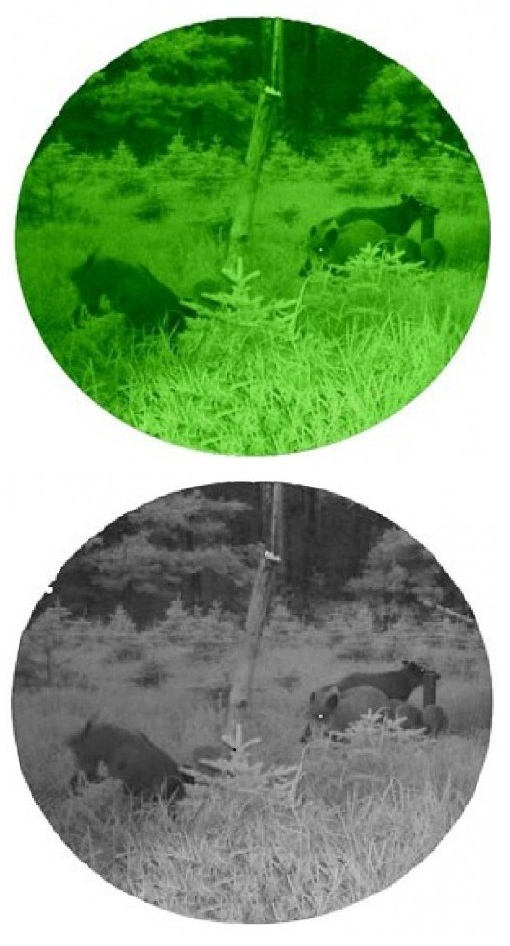
Green vs. Black&White IIT
Digital night vision devices, on the other hand, do not feature an image intensifier tube but a sensor, and the image is displayed on the screen in the ocular. Because of that, some digital night vision devices have the advantage that the color of the image can be changed. For daytime observations, the image can be changed to a full-color mode, and during the night into a black and white mode.
Night - Vision Binoculars vs Night Vision scopes
Both devices have some pros and cons.
-
Night vision scopes (monoculars) that feature more than 1x magnification are mostly used by hunters. They offer a magnified and intensified picture, which helps the user observe animals, nature, etc. during the night.
-
Compared to Night - Vision binoculars, they are a lot smaller in size, and also lighter in weight. Because of that, it is a lot more comfortable to transport since it takes less space.
-
Night vision - scopes are also cheaper than night vision binoculars.
Night vision binoculars offer the user a great viewing experience because it is a lot more comfortable when looking with both eyes. This is especially noticeable at longer-time observations. The depth perception is also better, but they are more difficult to adjust to the user’s eyes. They are mostly pretty big and bulky, and in most cases more expensive than monoculars.
A short presentation of Night - Vision Binoculars is available here.
View our Video presentation of night - vision binoculars
Short Presentation of popular night - vision binoculars
Filters
Sort
Filters
Sort


